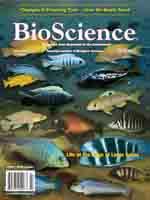An ever-expanding constellation of Earth-observing sensors provides us with a virtual tsunami of data, much of it now freely available. But channeling this digital torrent into useful information about the vegetated land surfaces requires a skillful blending of radiation physics, image processing, ecophysiology, and landscape ecology. This can be a complicated endeavor for the uninitiated. Most textbooks on remote sensing aim to survey the technology and applications broadly. Moreover, the recent rapid growth of online and open-access journals has increased the heterogeneity of an increasingly global remote-sensing literature.
Remote Sensing of Vegetation: Principles, Techniques, and Applications is a very welcome contribution as an introductory textbook for advanced undergraduates, graduate students, and autodidacts. The authors—Hamlyn Jones, honorary fellow of the College of Life Sciences, and Robin Vaughan, honorary fellow of the Centre for Remote Sensing and Environmental Monitoring, both at the University of Dundee, Scotland—have aimed “to provide a rigorous, yet fairly simple, grounding in the relevant basic physics and plant physiology to allow the reader to choose from and critically assess the plethora of new techniques that are becoming available” for the remote sensing of vegetation. The authors draw on their deep experience to pull together a text that presents sufficient mathematical detail without overwhelming the narrative flow with equations.
The book contains 11 chapters, and the argument is divided into four themes beyond the introductory chapter: the salient characteristics of illuminating radiation and the targets of interest (chapters 2–4); the general mechanics of data acquisition, processing, analysis, and modeling (chapters 5–8 and 10); the specific linkages among observed radiation, energy balance, and mass fluxes (chapter 9); and examples of applied remote sensing (chapter 11). The authors provide, at the end of the book, solutions for the illustrative exercises that conclude most chapters. Several pages of material are provided to decode the many symbols and acronyms used in remote sensing. Three appendices provide relevant units and conversions, a chronology of Earth observation, and a selective listing of current sensors that provide data for monitoring vegetation. Links to the Web sites mentioned in each chapter can also be found on the publisher's Web site.
I applaud the authors for addressing the thermal and microwave regions alongside the more familiar wavelength region of the visible to shortwave infrared. Many textbooks segment the topic of remote sensing by the instrumentality of the observing process, rather than through the perspective of the object of interest. By taking the latter approach, Jones and Vaughan revisit several times how active and passive microwave and thermal observations can shed light on various aspects of leaf, canopy, and land-surface dynamics.
Vegetation indices can be one of the more bewildering aspects of contemporary remote sensing. (One table in the book lists 28 different indices—merely a representative cross-section of the literature!) Jones and Vaughan provide an illuminating discourse on what spectral vegetation indices seek to do and how they relate to leaf and canopy properties such as chlorophyll content, leaf-area index, fraction of absorbed photosynthetically active radiation, and fractional cover.
A substantial section covers multiangular spectral data (obtained either remotely or “in field”), how they relate to models of canopy reflectance, and methods of model inversion. Jones and Vaughan provide a gentle but acutely informative introduction to bidirectional reflectance distribution functions (BRDFs). This treatment is particularly welcome, because recent Standard data products benefit from multiangular observations (e.g., the albedo and nadir BRDF adjusted reflectance products from NASA's workhorse instrument, MODIS).
In the chapter on sampling and scaling, I was surprised to find no discussion of intensive versus extensive variables and the challenges that intensive variables (quite common in remote sensing) pose for reconciling scales of observation. Moreover, given the need to link remotely sensed data with data collected at or near ground level, I was disappointed to see only a scant paragraph devoted to the difficult process of validation.
Remote Sensing of Vegetation concludes with surveys of five “integrated applications” that demonstrate how to implement, in a broad sense, the various modalities of remote sensing to address pertinent questions concerning the detection and diagnosis of plant stress; precision agriculture and crop management; ecosystem management; forestry; and, finally, wildfires and biomass burning. This section is in many ways the riskiest, because it must move beyond the abstract principles of the earlier chapters to particular alternative solutions to concrete problems. Because the authors had to choose which solutions to emphasize amid an active literature, some readers may find some of their choices less than satisfying. Yet, on the whole, the effort succeeds. Jones and Vaughan provide an excellent introduction to a growing transdisciplinary field of inquiry and practice—one that should find its way into many a syllabus.






